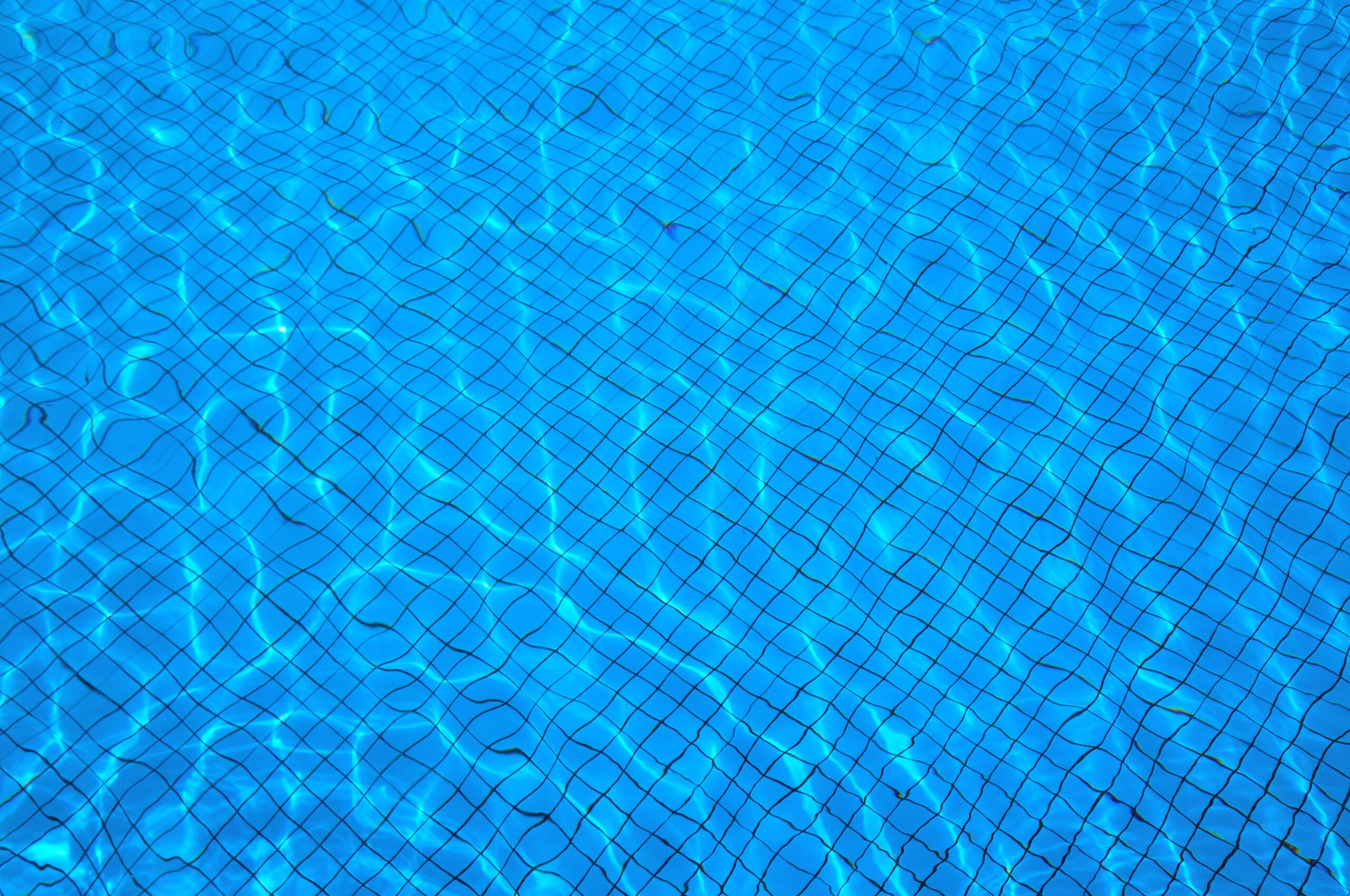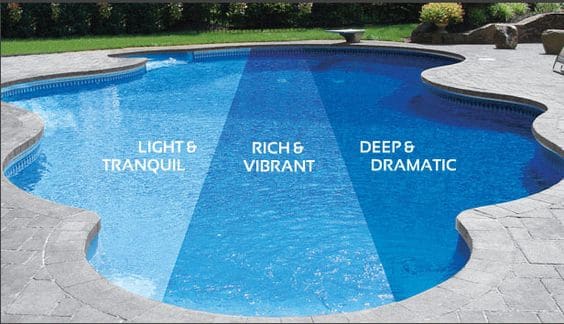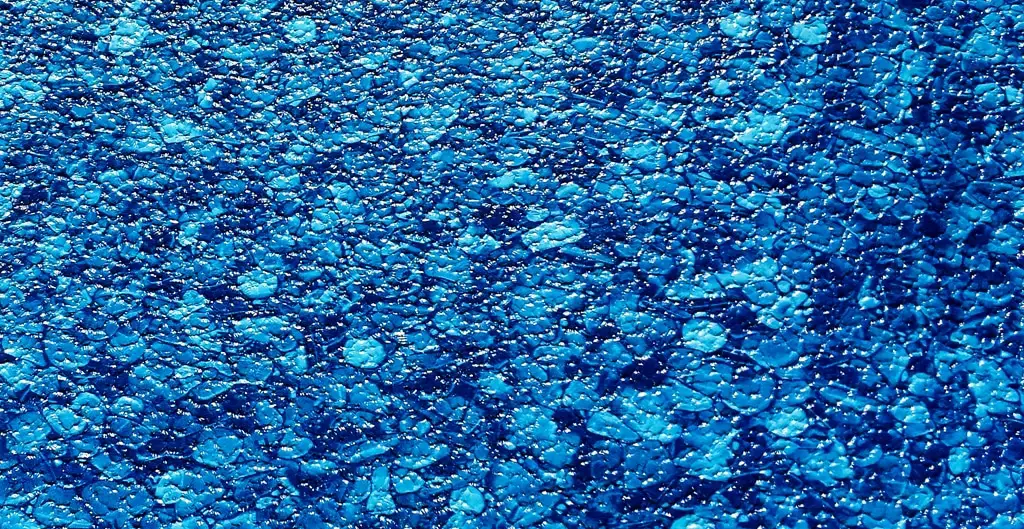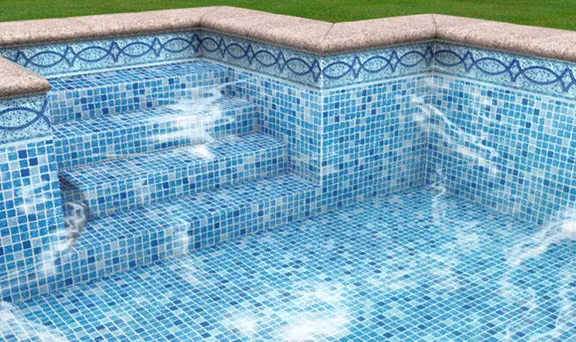
Want to learn more about algaecide? Read on to find out when to add algaecide to your pool maintenance routine and other helpful tips.
Pool liners will wear out, and eventually you will need to replace them. This is an opportunity to update the overall look and feel of your pool. The pool liner is one of the most immediately recognizable parts of your pool.
While the “best” liner is completely up to personal preference, there are many elements of the liner that will determine which is the best for YOU. Today at Pool Calculator we are going to be diving into these elements and providing you with an in-depth discussion that will point you in the right direction of what pool liner you should buy.
For more articles on Pool Maintenance, click here.

Like previously stated, your liner is one of the first things people will notice about your pool. The overall “vibe” of your pool will be determined by the color of your liner. There are many different colors that you may choose from, and that’s why it is so exciting.
amzn_assoc_tracking_id = “poolcalcula04-20”;
amzn_assoc_ad_mode = “manual”;
amzn_assoc_ad_type = “smart”;
amzn_assoc_marketplace = “amazon”;
amzn_assoc_region = “US”;
amzn_assoc_design = “enhanced_links”;
amzn_assoc_asins = “B08Y78VFLB”;
amzn_assoc_placement = “adunit”;
amzn_assoc_linkid = “9d464aad3337a13e84a2d34b2ce7cad4”;
Do you want a beach vibe to your pool? Go for a lighter liner and stay away from dark blue ones. Do you want that deep vibrant blue color? Those darker liners may be perfect for you. These liners can range from light, to medium and then to dark. Below is a picture example of the visual differences of each scale.
For more articles relating to pool lifestyle and that “perfect pool for you”, click here.

After determining a color, the texture of your liner will need to be determined. This is just as important as the color, and has a more tangible difference to pool owners. Do you want your pool to have a pebble feel? A very textured feel? Do you want it to still feel like tile? Concrete? All of these options are available to you as a pool owner and is completely up to personal preference.
Tip: Make sure you take your frequent pool visitors into account when choosing your liner texture. For example, if you have young kids who love to play in the pool you might want to opt for a texture with more grip in it. If you don’t have many young kids or others to worry about, pick the one that speaks to you the most.


The pattern of your liner often coincides with the texture you choose. The difference between rock liners, marble liners, or any other liner will ultimately affect the texture that you choose. This is where you really cement the type of pool you want to have, and what you’re going for as an owner.
This is where your budget can be a big factor for you as well. Nice liners like marble will cost more, but some will opt for them because of the look. We recommend determining a budget before you get started and build your liner and pool around it.
To go along with that discussion on cost, learn how much pool maintenance really costs here.

As previously discussed, costs will be a large determination of the pool liner you choose to go with. Liners come in a huge variety of forms, and with that, a huge variety of costs. Know that going in.
Also, don’t let the liner you choose sway you to take less about your pool chemistry. Even the nicest of pool liners will not shine if your pool is dirty, filled with algae, or off-balanced in any way.
Try our Pool Calculator application to make sure your pool water stays clear.

Want to learn more about algaecide? Read on to find out when to add algaecide to your pool maintenance routine and other helpful tips.

In this quick guide, we’ll answer the question “can you over shock a pool” and unveil the factors to consider when shocking a pool.

Maintaining both pH and total alkalinity in your swimming pool is important for keeping your pool properly sanitized and non-corrosive. Total alkalinity is to pH what cyanuric acid is to free chlorine. Total alkalinity stabilizes pH levels. The ideal pool pH level is 7.4 to 7.6. The ideal total alkalinity level is 80 to 120 ppm.

The Association of Pool and Spa Professionals recommends free chlorine levels for both swimming pools and hot tubs be kept between 2.0 and 4.0 ppm. However, the Center for Disease Control recommends free chlorine stay above 1 ppm in pools and 3 ppm in hot tubs.